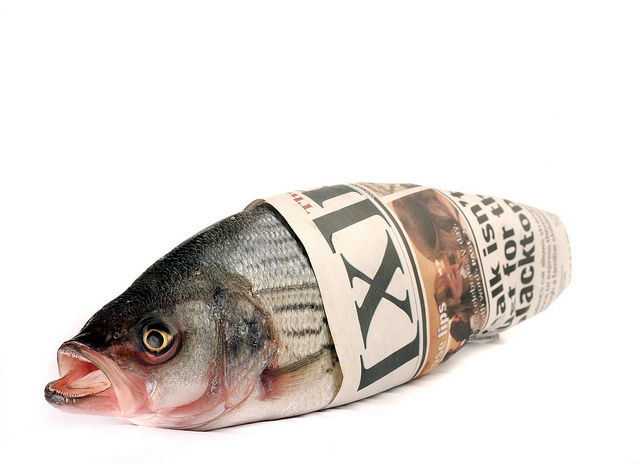Man, there was a lot to write about in technology this week: Elon Musk’s Power Wall, Microsoft’s sad attempt for relevancy in the consumer space and the stumbling retail launch of the Apple Watch. I was going to write about each of them, until that gaseous felon Conrad Black penned an op-ed in the National Post titled “Newspapers Must Fight Back.”
Prolixity comes as easily to Mr. Black as mail fraud so it is no surprise that he goes on at great length about what newspapers should do, and what he would do and what the Ontario Securities Commission (OSC) should have done. The piece is filled with, to borrow Mr. Black’s vocabulary and style, such choleric invective, anachronistic error and purblind irony that to let it lie would be a gross dereliction of one’s obligation to the fifth estate.
Let’s begin with the low-hanging fruit, from his Black’s work:
“… and will each have a designer edition where our own news preferences are weighted in our own version. They will be updated constantly and if we wish them printed, we will print them on more sophisticated home printers than are generally available now (which just produce regular fax-pages).”
I can only assume Lord Black is taking technology advice from Lord Grantham here. Home printers moved beyond the capacity of fax machines in the ’80s. You can get a laser printer for at Staples for under $100 and my Epson R3000 is capable of outputting museum-quality colour prints. But that is the least laughable aspect of Black’s analysis.
The notion that readers would print their own custom newspapers dates back at least to the early ’60s when Canadian publishers like the Ottawa Citizen’s Clark Davies visited newspapers in Japan and returned to home soil with visions of custom papers scrolling from home printers coast to coast. That was, of course, before the Internet or tablets. So, the publishers could be excused for such flights of fancy. I have no idea what Mr. Black’s excuse is since he wasn’t in prison that long.
Someone suggesting, in 2015, that consumers would actually print their own newspapers, instead of reading news on mobile screens is akin to opining that people who enjoy a drive in the country purchase a surrey and a couple of spirited Friesians.
Mr. Black also wrote:
“Newspaper readers do actually read the newspapers, including the advertisements. They don’t surf, and if they see something they like, they have the money to buy it, unlike most of the slavering devotees of the social media imparting to the world the flavour of ice cream they experimented with when they took their romantic attachment of the moment to the mall. Newspapers are the least mindless medium, and should exploit that commercially.”
It’s really hard, in the space of a single column, to dissect this crumpled ball of nonsense.
First, this is coming from a guy who in the ’90s saw earnings going south and bailed on newspapers so fast the door didn’t have time to hit his commodious target on the way out. Second, his dismissal of those of us who make use of, and garner news from, social media is endearing, really. It makes one want to take his Lordship out to the West Edmonton Mall for cherry ripple ice cream.
In reality, neither social media nor newspapers have the monopoly on either wise nor empty-headed readers. The social media spread about issues like Idle No More, missing Muslim girls or the ecological costs of the tar sands on the one hand, or the frequent newspaper stories about detox diets, cranial sacral manipulation and royal baby names on the other, prove that.
Second, Mr. Black clearly hasn’t been to a mall recently to observe firsthand the buying power of romantically enthralled ice cream fanciers. To suggest, as Mr. Black does, that newspapers ignore those soon-to-be parents and careerists and instead target themselves at an aging and shrinking demographic sitting patiently by their home fax machines waiting to print off the latest news bulletin from foreign lands is, well, odd advice.
Which leads us to this gem:
“In these circumstances, good print journalists are hireable at reasonable rates, and newspaper readers have been culled down to the true and prosperous believers who don’t mind paying more for a better product.”
Which, if I understand recent history correctly, translates as, “Since the demographic that reads newspapers is aging and shrinking, and a lot of journalists lost their jobs because of that, you can get journalists off the street a dime a dozen to write stories for a demographic that is aging and shrinking.” I fail to see the logic in that, but then, I thought AAA-rated derivatives based on bundling subprime junk mortgages was crazy too.
I was also struck by Black’s sudden concern for newspaper share prices and the return to investors. As memory serves, this is the same fellow whom the OSC found had diverted funds from Hollinger shareholders to himself and his pals using made up “non-competition” payments. Which is why the advice-doling Lord can no longer be a director or officer of a publically traded company in Ontario. Armchair CEOs are just the worst.
So, in the end, we have a sidelined CEO so out of touch with technology that he thinks we’ll inkjet our way into the future, who turned his back on newspapers and now encourages them to embrace a dying demographic to goose their stock price, who is happy to encourage the employment of journalists he happily asked his henchman David Radler to fire and believes that a younger demographic that could be captured with emerging media is made up of just so many hormone-deranged simpletons.
Clearly, not heeding his advice would be criminal.
Listen to an audio version of this column, read by the author, here.
Wayne MacPhail has been a print and online journalist for 25 years, and is a long-time writer for rabble.ca on technology and the Internet.
Photo: Thomas Levinson/flickr




